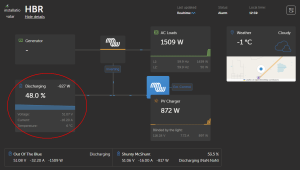I purchased and installed a Victron 500a smart shunt nearly a year ago. It works great, if I stand within 10 ft of it. Its bluetooth range leaves a lot to be desired.
My off-grid batteries, and all the electronics... and panels are 100ft + from the hours. I want to be able to view the shunt data inside the house and not have to stand out in the snow to get a bluetooth reading. I know, "Poor Boy! He has to stand out in the snow!"
What else do I need to invest in to get the Victron Smart Shunt signal across WiFi so I can use it in the house. It seems good business for Victron to sell all these different adapters, gateways, displays, cables, and whatever else. It brings in revenue. But, I really don't want to keep buying stuff until I finally (or possibly not) have a victory and be able to use the expensive shunt and all the work to install it.
What is the next component? And, will that provide a solution? I am retired and live on a very small fixed income. I know that solar generated electricity will never pay for itself in a person's lifetime. It is for our use during the many power outages we have where we live. Sometimes we cannot get out to get gasoline for the generator and electricity is needed.
Thanks for any light or help you can shed on the topic here.
1840w of solar panels feeding 8 12v deep cycle RV batteries wired 2s4p, charge controllers, 4000w PSW inverter. Currently, no sun and using more current than I am producing.
Ken
My off-grid batteries, and all the electronics... and panels are 100ft + from the hours. I want to be able to view the shunt data inside the house and not have to stand out in the snow to get a bluetooth reading. I know, "Poor Boy! He has to stand out in the snow!"
What else do I need to invest in to get the Victron Smart Shunt signal across WiFi so I can use it in the house. It seems good business for Victron to sell all these different adapters, gateways, displays, cables, and whatever else. It brings in revenue. But, I really don't want to keep buying stuff until I finally (or possibly not) have a victory and be able to use the expensive shunt and all the work to install it.
What is the next component? And, will that provide a solution? I am retired and live on a very small fixed income. I know that solar generated electricity will never pay for itself in a person's lifetime. It is for our use during the many power outages we have where we live. Sometimes we cannot get out to get gasoline for the generator and electricity is needed.
Thanks for any light or help you can shed on the topic here.
1840w of solar panels feeding 8 12v deep cycle RV batteries wired 2s4p, charge controllers, 4000w PSW inverter. Currently, no sun and using more current than I am producing.
Ken










